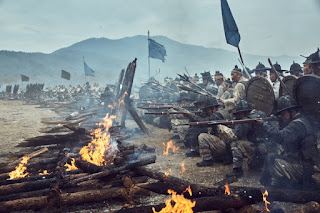Korean Lamellar
Chalgap (찰갑/察甲)- Steel lamellar of the Joseon Dynasty.
Historical recreation of the armour found at the Busan Fortress during the Imjin Invasion.
Lamellar is often hailed as the most common type found in Korea starting from the inception of the states history. Whether it be a variant that covers the chest for the common infantrymen to the heavy cavalry variant found on the depictions of Cataphracts of the 6th Century; Lamellar has always been the steadfast of defence for the people of the Peninsula.
In this article, i will hope to cover the variations of lamellar found in the historical annals of the: Joseon Sillok, during the 15-16th century as well as it's most common form of manufacturer.
Sejong Sillok
Silver Coated Lamellar as depicted in the Sejong Sillok (수은갑)
This pattern of armour is reflective (no pun intended) pf the types of armour found in the Busan fotress as well as the leather lamellar used by the official: Ryu Seong Ryeong during the Imjin Invasion.
It is manufactured by binding several hundred small steel scales using either leather or silk straps and weaved through a canvas of varying mediums. (often silk/cotton/leather) The ends of the armour are often covered in silk canvases or leather strings with hundreds of small straps and is recorded to have varying images of flowers embroiled on.
Although in this case, the Sejong annuals specifically references a type coated in Faux silver,
it would have been much more common to have one lacquered in either black, red brick or white to prevent scratches and rusting. The smaller lamellar pieces to adjacent and above are throat protection and armpit protection. Since Korean lamellars often made in dimensions similar to the greatcoats worn by Korean officers and retainers of the Early Joseon period, the design itself creates large gaps to the sides of the armour underneath the armpits.
As such, a lot of findings of Korean armour during the Joseon period also includes the two similar armpit protection speculated to be strapped either underneath or over the armour.
The same Lamellar armor depicted in the Annals of Seong Jong (1474), this time, with square lammelar scales instead of D shaped ones.
Undercoats of Joseon sentry, in which able fighting men would wear either with or without armour. Looks like that aristocrats about to get a smackin'
It is later refenced in the Sejong Sillok that the common fighting men would have be legally bound to wear a Steel coat and a Kettle hat of varying types and equip themselves with one handed sabres. The main weapon of the soldier would depend on which regiments they would be allocated to, the most common being either an Archer, Spearmen, Glaivemen or the esteemed Shield infatry of the Golden division. But i will have to cover this later, as mounds of assignments draws near.





Thank you for this article.
ReplyDeleteThank you very much for reading! I'm trying my best
Delete